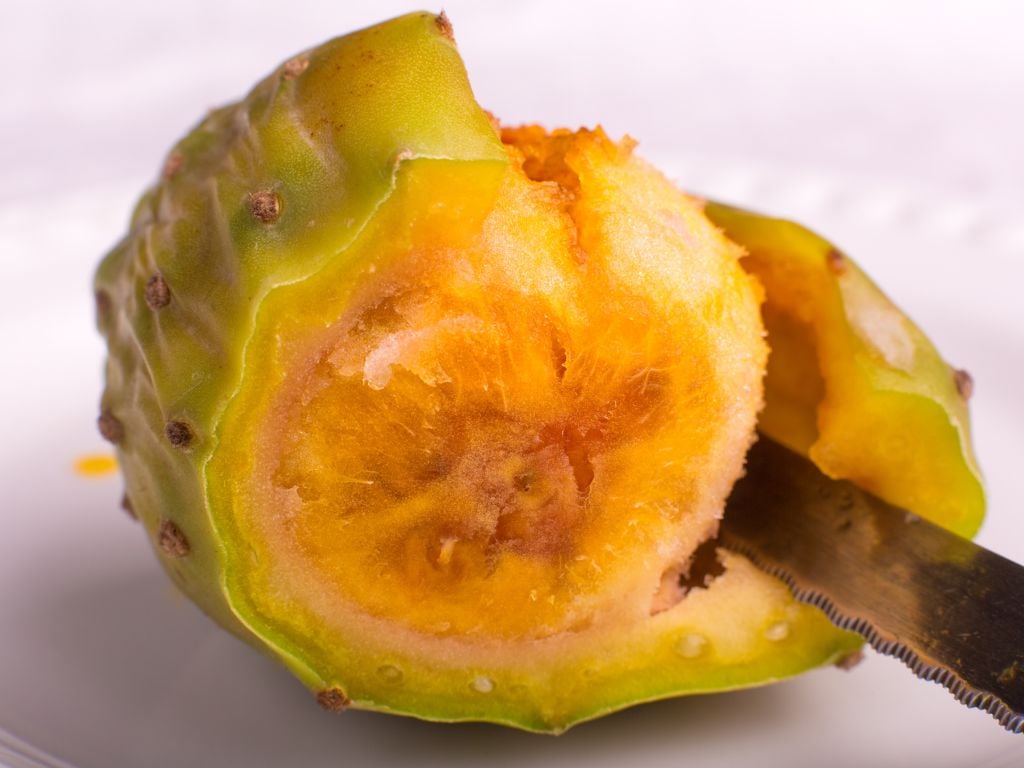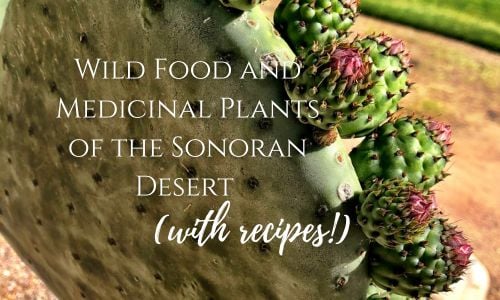Wild Food and Medicinal Plants of the Sonoran Desert (right here in Oro Valley!)
The Sonoran Desert may seem harsh and arid at first glance, but beneath its dry surface lies a treasure trove of plants that have been used for centuries by indigenous peoples for food, medicine, and even spiritual purposes. Most people already know that they gel from aloe can be beneficial for burns and other conditions— but that is definitely not the only plant around that you can use! From prickly pears to mesquite trees, the desert is teeming with a wealth of natural resources that are as nourishing as they are fascinating.
Prickly Pear Cactus (Opuntia spp.)
Food: The prickly pear cactus, often seen dotting the desert landscape with its distinctive flat pads and vibrant pink or purple fruit, is a versatile plant used by many desert dwellers. The pads, known as nopales, are edible and can be used in a variety of dishes, from salads to tacos. The fruit, called tunas, is sweet and slightly tangy, making it a popular ingredient for jellies, jams, and beverages.
Medicinal Uses: The prickly pear is known for its ability to support digestive health, regulate blood sugar levels, and even reduce cholesterol. Some studies suggest that consuming prickly pear may help alleviate symptoms of hangovers, thanks to its high antioxidant content. (Can this cancel out the effects of a prickly pear margarita? 🙃 )
Recipe: Prickly Pear Syrup
You’ll need:
4 prickly pear fruits (tunas), 1/4 cup sugar, 1/2 cup water, 1 tsp lemon juice
Instructions:
Peel the prickly pears, removing the skin and seeds. Blend the fruit until smooth, then strain to remove any remaining pulp.
In a saucepan, combine the juice with water, sugar, and lemon juice. Bring to a simmer and cook for about 15-20 minutes until it thickens into a syrup.
Cool and store in a jar. Use as a topping for pancakes, yogurt, or in cocktails. (We have had prickly pear margaritas and prickly pear pancake syrup—both delicious! If you get a prickly pear margarita at a local restaurant, ask if it is made from actual puree or just flavoring—it makes a huge difference!)
Mesquite Tree (Neltuma spp.)
Food: The mesquite tree, often seen in desert landscapes, is a highly nutritious plant. The pods contain sweet, nutty flour that has been ground into a meal for centuries by Native Americans. Mesquite flour is gluten-free, high in protein, and contains essential amino acids.
Medicinal Uses: The mesquite plant is used for its anti-inflammatory properties and to support digestive health. The pods and leaves can be used in teas to alleviate symptoms of colds and sore throats, and the bark is sometimes used to soothe burns.
Recipe: Mesquite Pancakes
You'll need:
1 cup mesquite flour (to make this, you need to dehydrate, grind and sift your beans. Here is a recipe for that.)
1 cup whole wheat flour
1 tbsp baking powder
1/4 tsp salt
2 eggs
1 cup milk (or non-dairy milk)
2 tbsp honey
1 tsp vanilla extract
Instructions:
In a large bowl, whisk together mesquite flour, whole wheat flour, baking powder, and salt. In a separate bowl, whisk the eggs, milk, honey, and vanilla. Combine the wet ingredients with the dry ingredients and mix until just combined. Heat a non-stick skillet over medium heat and pour the batter into small circles. Cook for about 2-3 minutes per side, or until golden brown. Serve with fresh fruit or syrup (like the prickly pear syrup above!).
Desert Lavender (Condea spp)
Food: Desert lavender is not only an aromatic shrub but also a versatile herb. The leaves and flowers can be used to add a delicate floral flavor to teas, baked goods, and even as a garnish in savory dishes.
Medicinal Uses: Desert lavender has been used for its calming and soothing properties. It is known to help with anxiety, insomnia, and digestive issues. The plant is also considered an anti-inflammatory and is often used in ointments for minor skin irritations.
Recipe: Desert Lavender Tea
You'll need:
1 tsp dried desert lavender flowers
1 cup hot water
1 tsp honey (optional)
Instructions:
Steep the dried lavender flowers in hot water for 5-7 minutes. Strain the flowers and stir in honey for sweetness. Enjoy this calming tea before bed for a restful night’s sleep—I recommend adding a tiny bit of vanilla as well!
Cholla Cactus (Cylindropuntia spp.)
Food: The Teddy Bear Cholla is infamous for its spiny exterior, but it’s also a valuable source of nutrition. The young, tender pads (known as cholla buds) can be harvested, cleaned, and boiled or grilled for a slightly tangy, earthy flavor. The fruits, or cholla berries, can be eaten raw or used in preserves.
Medicinal Uses: Cholla cactus has been used for its anti-inflammatory properties and is known to aid in hydration. Some people drink cholla juice for its potential to help with kidney function and inflammation.
Recipe: Grilled Cholla Pads
Ingredients:
3 cholla cactus buds (fresh, cleaned, and thorns removed)
Olive oil
Salt and pepper
Lime juice
Instructions:
Slice the cholla buds into strips and brush with olive oil. Season with salt, pepper, and a squeeze of lime juice. Grill the strips over medium heat for about 5-7 minutes, turning occasionally. Serve as a side dish or toss into a salad for an added touch of the desert!
Agave (Agave spp.)
Food: Agave is a well-known desert plant, often associated with tequila, but its flowers and sap can be used for food. The sap, called aguamiel, can be consumed as a sweetener or fermented into pulque (an ancient alcoholic beverage). The hearts of certain agave species are also edible when roasted and offer a rich, earthy flavor. (Note—there are some studies that suggest that agave in excess is NOT healthy—so do you research before you think about swapping out your regular sweeteners on a daily basis for it.)
Medicinal Uses: Agave sap has been used to treat sore throats, digestive problems, and even minor skin wounds. Agave is known for its antibacterial properties and has traditionally been used to heal cuts and burns.
Recipe: Agave Sweetened Dessert
You'll need:
1/2 cup agave syrup (Here is a recipe if you are a real DIYer —but you can also purchase this is many local grocery stores here in Oro Valley.)
1 cup rolled oats
1/2 cup peanut butter (or other nut butter—I prefer almond)
1/4 cup chopped nuts (optional)
Instructions:
In a bowl, mix together the oats, peanut butter, and agave syrup until well combined. Roll the mixture into bite-sized balls and refrigerate for 30 minutes to set. YUM.
A few other plants that are edible include the fruits of the Saguaro cactus and the barrel cactus, desert chia and wolfberries (and many more.) There are also many local restaurants in the area that utilize local plants in some of their menu items if you would rather leave the foraging and cooking to someone else!
¡Buen Provecho! (Enjoy your meal!)



